The importance of radii
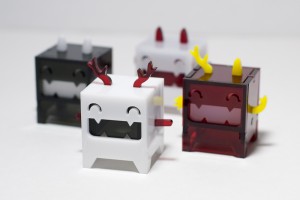
We’ve written about using ‘nodes’ with 3D objects made from wood before, but suggested it may not work for acrylic because it is more brittle and less forgiving.
However, after working with Drownspire to develop their Vambit toy into a product we could give away at Makerfaire, I discovered that you can successfully use nodes when making with acrylic.
There are, however, some tricks to it.
Firstly the nodes need to be a bit smaller <0.15mm/0.006″ on each side. This means it wont cover the same range as in wood but still a good option.
Second, how you treat the end of the slot is the key. If you have a sharp corner, typical in a laser cut slot, the acrylic will always fracture at that corner. See this example.
Effectively a sharp corner is creating a weak point in the acrylic. Not good when this is structurally an important part of the design. A small radii in that corner does wonders to transfer the forces from one face of the hole or slot to the other and reduces the risk of the material splitting at the corner.
The larger the radii the stronger it will be so you will need to make an aesthetic decision on how big you can go. On the Vambit the radii was tiny, 0.26mm and it was enough to make a noticeable difference. I would aim for 0.5mm and greater if your design will allow it.
Another trick to keep in mind is putting the nodes on a part of the design where you can guarantee the length. That way you don’t need to bet on the thickness changing and the range of variation is a lot smaller. This occurs when you have 2 edges that are cut by the laser that are the friction edges. This works if you are using tabs but is not necessarily the case if you are using a slotting joint.
For example, in the design of this spinning top I put the nodes on the tab as opposed to on the slot.
The tabs on the triangle parts fit into the slots on the circle part. Dimension X and Y will be the same each time as cut by the laser therefore I put the nodes on these parts. Had I put the nodes on the slot for the handle (as in diagram below), the friction points would be against the surface of the material, a part that can vary if the thickness varies.
An alternative joint is the t-slot joint which is popular with people who make more engineering type products. This joint uses tabs to locate pieces then a t shaped slot with a captive nut. This type of joint is great. You can slightly oversize the holes to allow for oversized material and the bolt will hold it snug together. If you use the radii on the corners of the cut outs you greatly reduce the risk of cracking the acrylic by over tightening the bolt.
If you want to go another step, rubber washers can also reduce the chance of over tightening and maintain tension in the blot so it wont come undone through vibrations etc.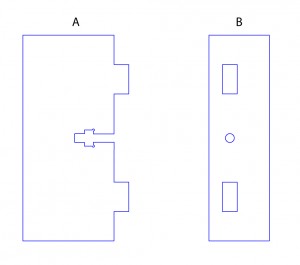
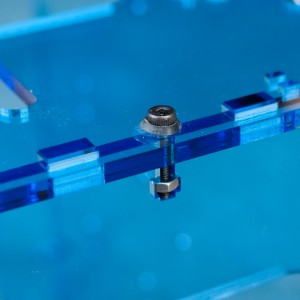 I hope these tips will help you with your next project, or perhaps to finalize a design you’re working on.
I hope these tips will help you with your next project, or perhaps to finalize a design you’re working on.
We’ll be interested to hear you’re experiences using radii too, and any other advice you might have for people wanting to make 3D designs using acrylic. Let us know below!
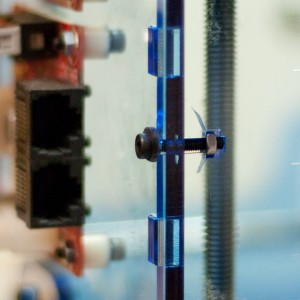
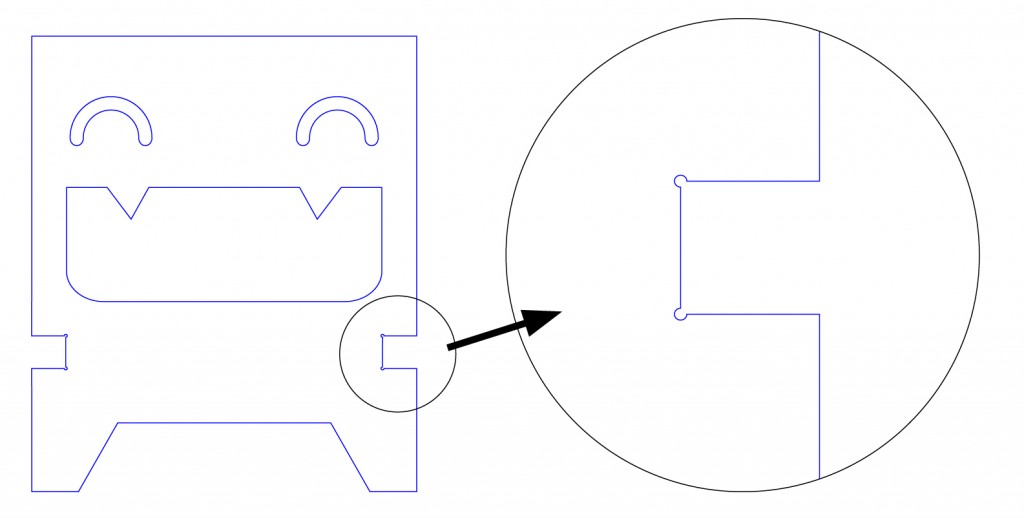
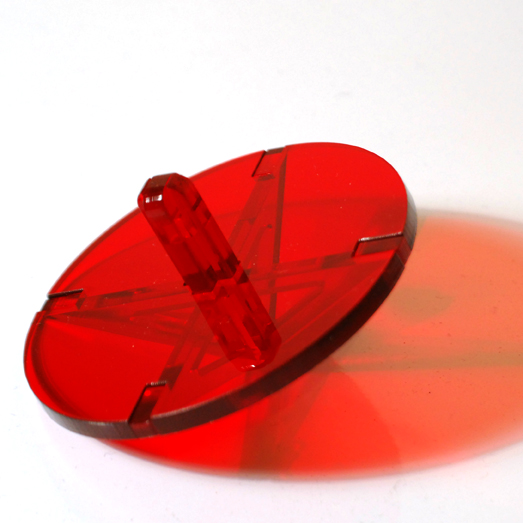
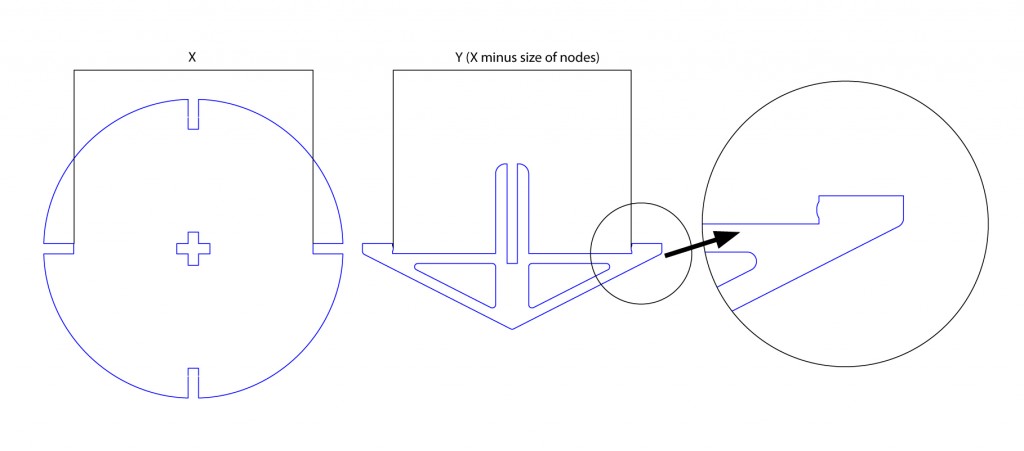
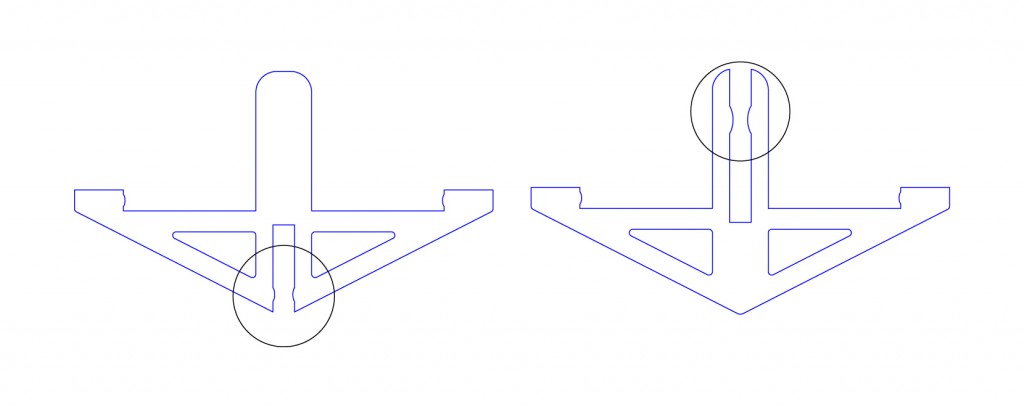
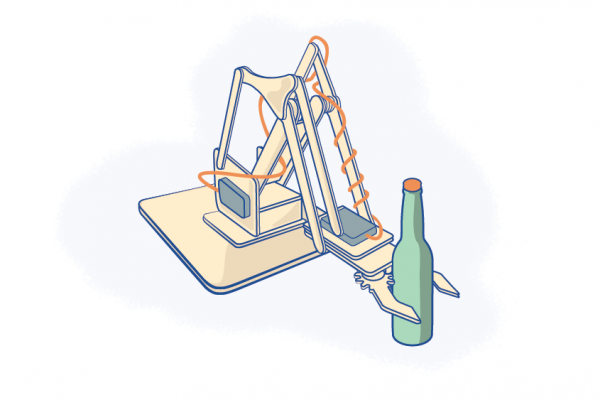
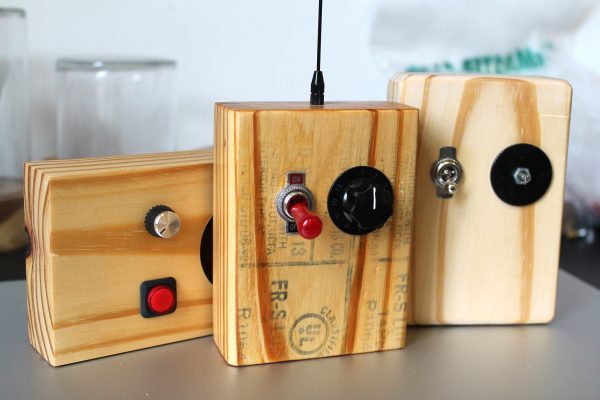

9 Comments
Great advice Dan, I know some of this can also be used for other materials such as wood though I’ve stayed away from nodes in my designs because using them removes the ability to further optimize EPS files for slotted designs.
Acrylic also has no give/take, which makes the nodes more of a necessity in my opinion to keep things together during the drying (using glue) process.
Jon @ WoodMarvels.com
That’s right Jon, these principles are useful to consider for the other materials as well.
Good post, need more posts like this! I was going to try that t-slot design and would’ve had to learn the hard way about fracturing.
Also, where’s a good source to buy those black hex bolts?
Tito
Tito
McMasterCarr is the BEST place to buy hardware. Order before 5pm and you’ll receive it the next day (LA – SF, could be longer for other locations)
The bolts in the Makerbot are Black M3 Socket Cap screws (part no. 91290A120) and standard M3 nuts (part no. 90592A009). Sorry can link you directly, that is the one thing that lets McMaster down.
Thanks, Dan! Any ideas why socket cap screws were chosen? (Seems like you need a special wrench, or is hex more common internationally over philips/flathead screws?)
Interested in making a case for OpenPCR (http://openpcr.org) that is easy to put together, beautiful, and portable/durable (unlike makerbot in that way). Love to hear ideas!!
Any chance you have 1/8″ aluminum on hand to cut over in Oakland?
Tito
SF
Hex keys are common internationally and there are lots of good reasons to choose them. The main one probably being that they are more durable than philips or flatheads. Makerbot ships the hex keys you need if you order the deluxe kit. I think the biggest issue would be finding metric sizes here in the US if you already had a set.
Unfortunately no 1/8″ aluminum yet. Seems like that would be overkill. You could probably get away with 1/16″ if using aluminum but I’m not sure the overall size of your box. It would look nice in wood I think.
Thanks, wood does look nice! Is 1/16″ aluminum available? My concern would be that the edges might be sharp – or does the laser cutter melt aluminum smooth?
Tito
I wrote Mcmaster about their link problem, they said…
Please use the following links when you’d like to share a specific page or part with someone. To direct someone to a particular catalog page, just use:
http://www.mcmaster.com/nav/enter.asp?pagenum=
Just enter the page number after the equal (=) sign. For example, if you’d like to send someone to page 500, the URL would look like this: http://www.mcmaster.com/nav/enter.asp?pagenum=500
If you’d like to direct someone to a particular part number, just use:
http://www.mcmaster.com/nav/enter.asp?partnum=
Just like the previous URL, just enter the part number after the equal (=) sign. The URL would look like this: http://www.mcmaster.com/nav/enter.asp?partnum=25605A63
This is tight Dan, good read!
So many good ideas 🙂
Comments are closed.